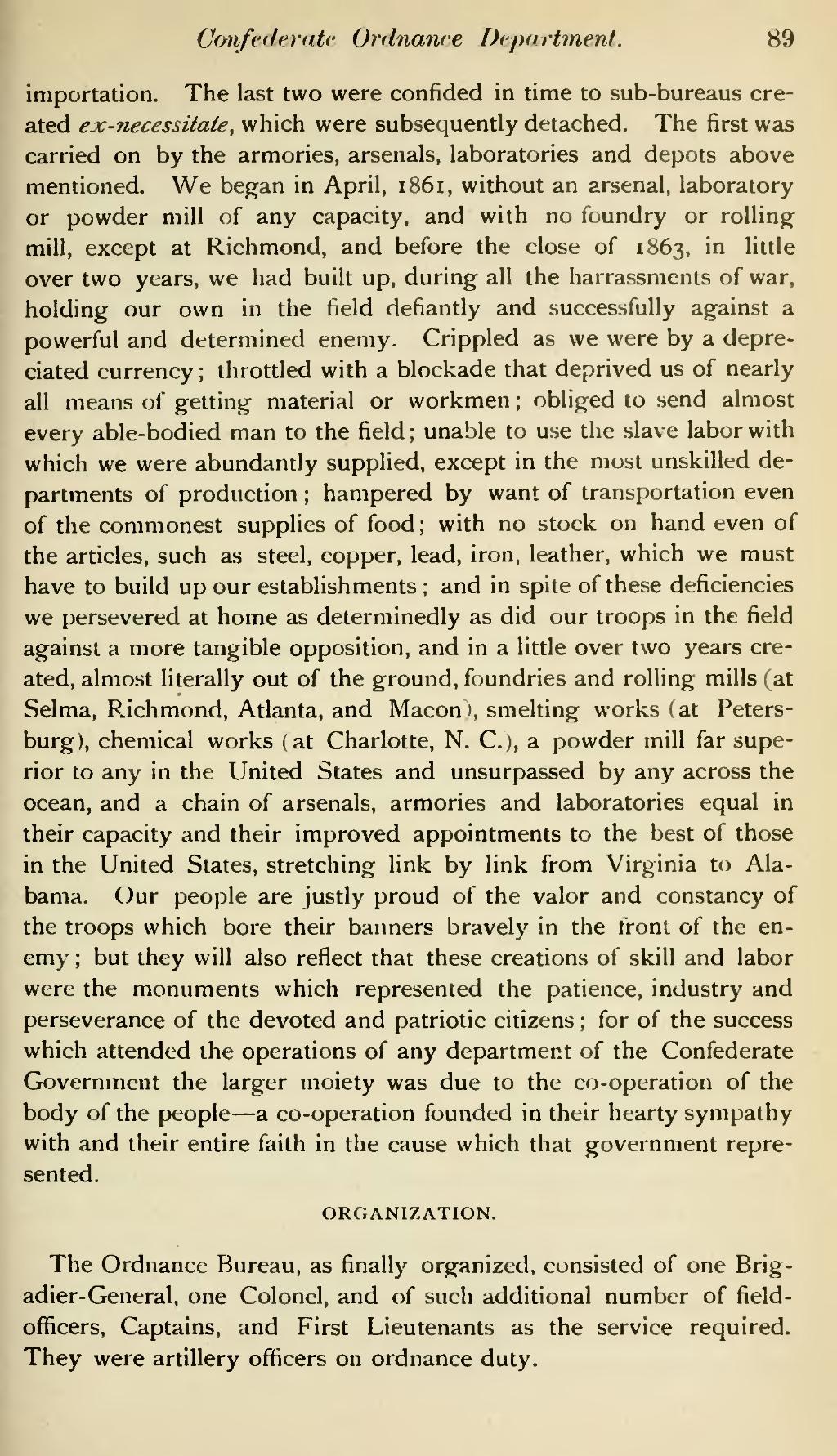Confederate Ordnance Department. 89
importation. The last two were confided in time to sub-bureaus cre- ated ex-necessitate, which were subsequently detached. The first was carried on by the armories, arsenals, laboratories and depots above mentioned. We began in April, 1861, without an arsenal, laboratory or powder mill of any capacity, and with no foundry or rolling mill, except at Richmond, and before the close of 1863, in little over two years, we had built up, during all the harrassments of war, holding our own in the field defiantly and successfully against a powerful and determined enemy. Crippled as we were by a depre- ciated currency; throttled with a blockade that deprived us of nearly all means of getting material or workmen ; obliged to send almost every able-bodied man to the field; unable to use the slave labor with which we were abundantly supplied, except in the most unskilled de- partments of production ; hampered by want of transportation even of the commonest supplies of food; with no stock on hand even of the articles, such as steel, copper, lead, iron, leather, which we must have to build up our establishments ; and in spite of these deficiencies we persevered at home as determinedly as did our troops in the field against a more tangible opposition, and in a little over two years cre- ated, almost literally out of the ground, foundries and rolling mills (at Selma, R.ichmond, Atlanta, and Macon), smelting works (at Peters- burg), chemical works (at Charlotte, N. C), a powder mill far supe- rior to any in the United States and unsurpassed by any across the ocean, and a chain of arsenals, armories and laboratories equal in their capacity and their improved appointments to the best of those in the United States, stretching link by link from Virginia to Ala- bama. Our people are justly proud of the valor and constancy of the troops which bore their banners bravely in the front of the en- emy ; but they will also reflect that these creations of skill and labor were the monuments which represented the patience, industry and perseverance of the devoted and patriotic citizens ; for of the success which attended the operations of any department of the Confederate Government the larger moiety was due to the co-operation of the body of the people — a co-operation founded in their hearty sympathy with and their entire faith in the cause which that government repre- sented.
ORGANIZATION.
The Ordnance Bureau, as finally organized, consisted of one Brig- adier-General, one Colonel, and of such additional number of field- officers, Captains, and First Lieutenants as the service required. They were artillery officers on ordnance duty.
